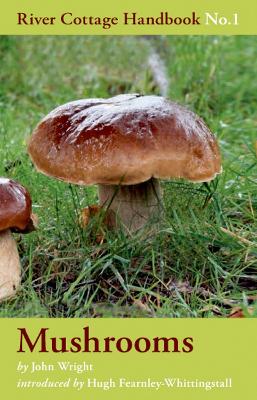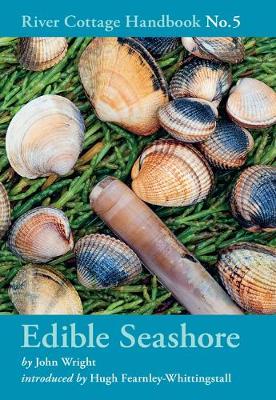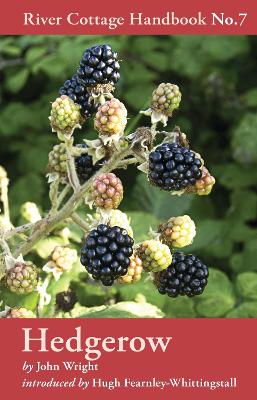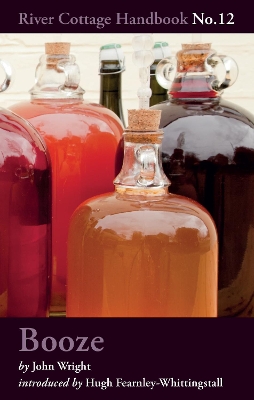River Cottage Handbook
3 primary works • 4 total works
Book 1
In the first of an exciting new River Cottage Handbook series, mycologist John Wright explains the ins and outs of collecting, including relevant UK laws, conservation notes, practical tips and identification techniques. He takes us through the 72 species we are most likely to come across during forays in Britain's forests and clearings: old friends the Chanterelle and Cep, as well as a whole colourful host of more unfamiliar names - edible species including the Velvet Shank, the Horn of Plenty, the Amethyst Deceiver, the Giant Puffball and the Chicken in the Woods, and poisonous types such as the Sickener, the Death Cap and the Destroying Angel. The handbook is completed by more than 30 simple and delicious mushroom recipes from the River Cottage team. With colour photographs throughout, line drawings, a user-friendly Key and an introduction by Hugh Fearnley-Whittingstall, The River Cottage Mushroom Handbook is a comprehensive and collectable guide, destined to be an indispensable household reference.
Book 5
For the forager, the seashore holds surprising culinary potential. In this authoritative, witty book John Wright takes us on a trip to the seaside. But before introducing us to the various species to be harvested, he touches on such practicalities as conservation and the ethics of foraging; safety from tides, rocks and food poisoning; the law and access to the shore, our right to fish, landing sizes and seasons; and equipment such as nets, pots and hooks. Next comes the nitty-gritty: all the main British seashore species that one might be tempted to eat. The conservation status, taste and texture, availability, seasonality, habitat, collecting technique and biology of each species is covered; there are also quite a few gratuitous but fascinating diversions.
The species covered include crustacea (brown shrimp, common crab, lobster, prawn, shore crab, spider crab, squat lobster, velvet swimming crab); molluscs (clams, cockle, dog whelk, limpet, mussel, oyster, razor clam, winkle); mushrooms; plants (alexanders, babbington's orache, fennel, frosted orache, marsh samphire, perennial wall rocket, rock samphire, sea beet, sea buckthorn, sea holly, sea kale, sea purslane, sea rocket, spear-leaved orache, wild cabbage, wild thyme); and seaweed (carragheen, dulse, gut weed, laver, pepper dulse, sea lettuce, sugar kelp, kelp). Finally, there are thirty brilliant recipes. Introduced by Hugh Fearnley-Whittingstall, Edible Seashore is destined to join the other handbooks in the series as an indispensable household reference.
The species covered include crustacea (brown shrimp, common crab, lobster, prawn, shore crab, spider crab, squat lobster, velvet swimming crab); molluscs (clams, cockle, dog whelk, limpet, mussel, oyster, razor clam, winkle); mushrooms; plants (alexanders, babbington's orache, fennel, frosted orache, marsh samphire, perennial wall rocket, rock samphire, sea beet, sea buckthorn, sea holly, sea kale, sea purslane, sea rocket, spear-leaved orache, wild cabbage, wild thyme); and seaweed (carragheen, dulse, gut weed, laver, pepper dulse, sea lettuce, sugar kelp, kelp). Finally, there are thirty brilliant recipes. Introduced by Hugh Fearnley-Whittingstall, Edible Seashore is destined to join the other handbooks in the series as an indispensable household reference.
Book 7
Hedgerows, moors, meadows and woods - these hold a veritable feast for the forager. In this hugely informative and witty handbook, John Wright reveals how to spot the free and delicious pickings to be found in the British countryside, and how to prepare and cook them. First John touches on the basics for the hedgerow forager, with an introduction to conservation, safety, the law, and all the equipment that you may need. Next he guides you through the tasty edible species to be found. Each one is accompanied by photographs for identification, along with their conservation status, habitat, distribution, season, taste, texture and cooking methods - not forgetting, of course, some fascinating asides and diversions about their taxonomy and history. Fifty species are covered, including bilberries, blackberries, raspberries, common mallow, dandelions, hedge garlic, horseradish, pignuts, nettles, sloes, sweet chestnuts, water mint, bulrushes and wild cherries. After this there is a section describing the poisonous species to steer clear of, with identifying photographs as well as warnings about nasty 'lookalikes'.
Finally, there are thirty delicious recipes to show how you can make the most of your (edible) findings. Introduced by Hugh Fearnley-Whittingstall, Hedgerow is an indispensable household reference, and an essential book to have by your side for every trip into the countryside.
Finally, there are thirty delicious recipes to show how you can make the most of your (edible) findings. Introduced by Hugh Fearnley-Whittingstall, Hedgerow is an indispensable household reference, and an essential book to have by your side for every trip into the countryside.
'It’s hard not to love John Wright ... This book is full of wit and wisdom – a delight for the fireside armchair' BBC Countryfile
What could possibly beat a cool pint of beer down the pub or a lazy glass of wine at your favourite bar? The answer is: home-brewed beer or your very own brand of wine. With this, the twelfth in the River Cottage Handbook series, the inimitable John Wright shows exactly how easy it is to get started. You don't need masses of space to make alcohol at home, and if you follow the simple instructions, you won't be faced with exploding bottles in the cellar. But don't forget, it's all about experimentation and finding out what works for you.
Booze is divided up by alcohol type, from beer, cider and wine to herbal spirits and fruit liqueurs. Each section starts with an introduction to the basic techniques, methods and other useful information, before giving recipes for delicious tipples like rhubarb wine, sparkling elderflower wine, mead, cherry plum wine, orange beer, lager, real ginger beer, sweet cider, zubrovka vodka, amber spirits, rose infusions, blackberry whiskey, pomegranate rum, chestnut liqueur, mulled cider and there's even a hangover cure thrown in for good measure.
With an introduction from Hugh Fearnley-Whittingstall and full-colour photographs as well as illustrations, Booze is a home-brewer's book with a kick and features a directory at the back of the book where you can find instructions on purchasing the best home-brewing kits.
What could possibly beat a cool pint of beer down the pub or a lazy glass of wine at your favourite bar? The answer is: home-brewed beer or your very own brand of wine. With this, the twelfth in the River Cottage Handbook series, the inimitable John Wright shows exactly how easy it is to get started. You don't need masses of space to make alcohol at home, and if you follow the simple instructions, you won't be faced with exploding bottles in the cellar. But don't forget, it's all about experimentation and finding out what works for you.
Booze is divided up by alcohol type, from beer, cider and wine to herbal spirits and fruit liqueurs. Each section starts with an introduction to the basic techniques, methods and other useful information, before giving recipes for delicious tipples like rhubarb wine, sparkling elderflower wine, mead, cherry plum wine, orange beer, lager, real ginger beer, sweet cider, zubrovka vodka, amber spirits, rose infusions, blackberry whiskey, pomegranate rum, chestnut liqueur, mulled cider and there's even a hangover cure thrown in for good measure.
With an introduction from Hugh Fearnley-Whittingstall and full-colour photographs as well as illustrations, Booze is a home-brewer's book with a kick and features a directory at the back of the book where you can find instructions on purchasing the best home-brewing kits.



